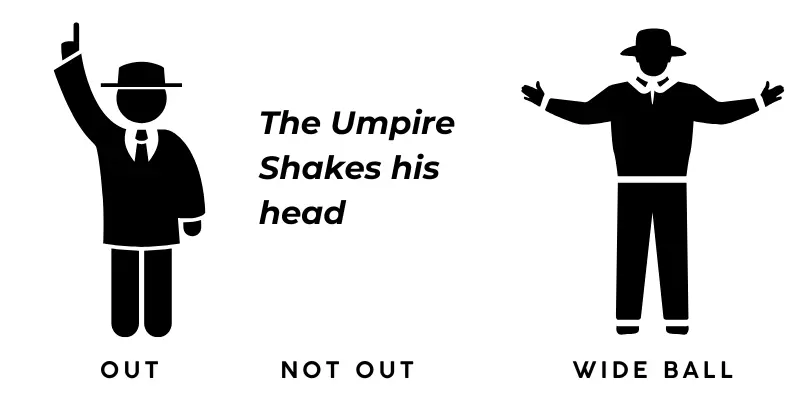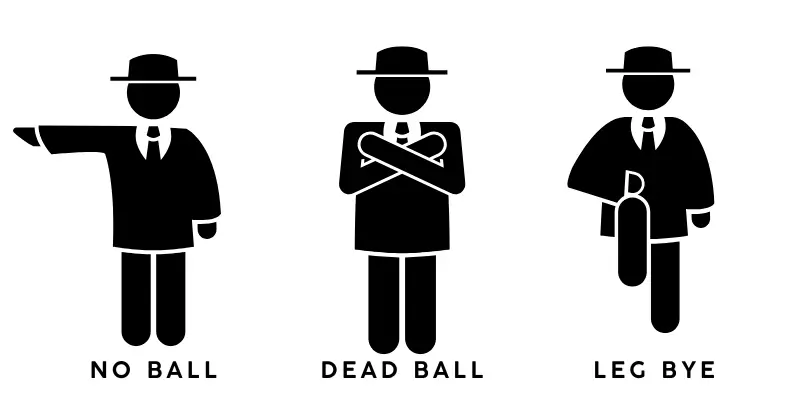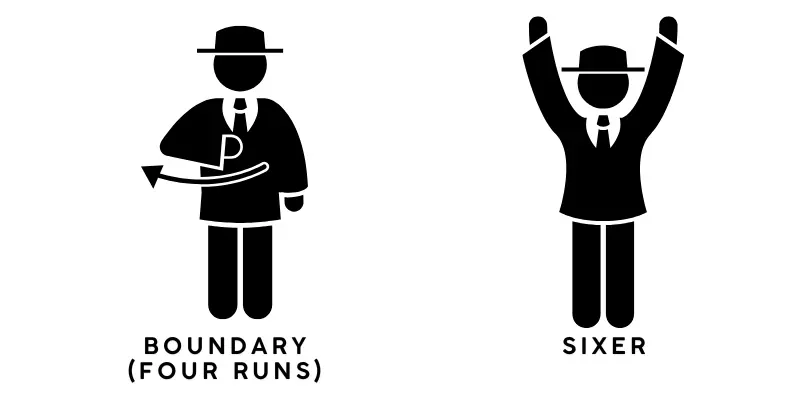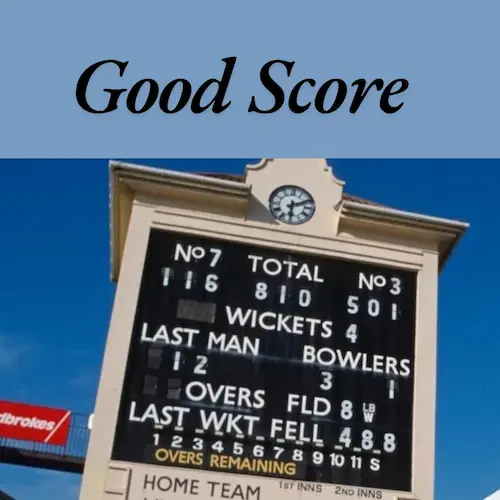Cracking the Cricket Umpire Calls (What’s Really Going On ?)
Published: 18 Dec 2024
If you find yourself puzzled by an umpire’s gesture, you’re not alone! Understanding these signals can make watching cricket even more exciting, especially for beginners.
Cricket umpire calls are more than just hand signals—they’re the language of the game which is understood by all the players and game watchers as well. So, whether it’s a boundary, an out, or a no-ball, these calls ensure every match runs smoothly and fairly. In this guide, we’ll break down the most common umpire calls so you can follow the game like a true cricket fan.
Signaling a “no ball”, or making crucial DRS decisions, everything is explained.

What Do Cricket Umpire Signals Say?
· Out – The umpire raises one finger straight up to declare the batter out.
· Not Out – The umpire shakes his head or keeps both hands down to deny an appeal.
· A Wide Ball – The umpire extends both arms horizontally to signal a delivery too wide for the batter.

· No Ball – The umpire raises one arm horizontally to signal an illegal delivery.
· Dead Ball – The umpire crosses both arms in front of his waist.
· Leg Bye – The umpire touches one knee with his hand to indicate runs scored off the batter’s leg or body.

· Bye – The umpire raises one hand above his head with an open palm.
· Free Hit – The umpire circles one hand above his head to indicate the next ball is a free hit.
· Short Run – The umpire taps his shoulder with one hand to signal an incomplete run.

· Powerplay Signal – It’s similar to the freehit signal. The umpire circles one hand over his head to indicate fielding restrictions.
· Umpire’s Call (DRS) – Decision Review System(DRS), The decision is retained as “umpire’s call” when the on-field umpire’s original decision stands.
· Revoke Call (Dead Ball Reversal) – The umpire crosses both hands above his head to revoke an incorrect signal.

· Boundary (4 Runs) – The umpire waves his arm back and forth in front of his chest.
· Six Runs (6) – The umpire raises both arms above his head.

· Soft Signal – The umpire gives a soft verbal decision with a signal, usually pointing a finger or making a gesture before DRS review.
· Penalty Runs – The umpire places one hand on the opposite shoulder to award penalty runs.
· Bouncer Warning – The umpire raises one hand to shoulder height for a short-pitched ball warning.
· Time Out – The umpire crosses both arms above his head to signal a timeout in the match.
· End of Over – The umpire raises one arm and calls “Over” to signal the completion of six deliveries.
· Last Hour of Play (Test Matches) – The umpire raises one hand and points to their wrist, indicating the final hour of play.
Some less-known cricket umpire signals
While most cricket fans are familiar with common umpire signals like “Out,” “No Ball,” or “Wide,” there are a few lesser-known signals that are not seen very often during matches. Here are some of them:
Lesser-Known Cricket Umpire Signals
· Batter Delaying Play (Time Penalty)
The umpire points to his wrist, signaling that the batter took too much time to get ready.
· Last Hour of Play Signal (Test Matches)
The umpire raises one hand with his watch to indicate the start of the final hour in a Test match.
· Player Warning (Unfair Play)
The umpire raises both hands with palms facing outward to caution a player about unfair or unsporting behavior.
· Bouncer Warning
The umpire raises one hand to shoulder height, indicating that the bowler has bowled a short-pitched delivery that is borderline illegal.
Final Thoughts
Understanding cricket umpire calls and signals is key to fully enjoying the game. By learning these simple umpire calls, you can confidently follow every decision and deepen your knowledge of cricket. Whether you’re a fan or a player, understanding these signals will enhance your experience on and off the field

- Be Respectful
- Stay Relevant
- Stay Positive
- True Feedback
- Encourage Discussion
- Avoid Spamming
- No Fake News
- Don't Copy-Paste
- No Personal Attacks

- Be Respectful
- Stay Relevant
- Stay Positive
- True Feedback
- Encourage Discussion
- Avoid Spamming
- No Fake News
- Don't Copy-Paste
- No Personal Attacks





